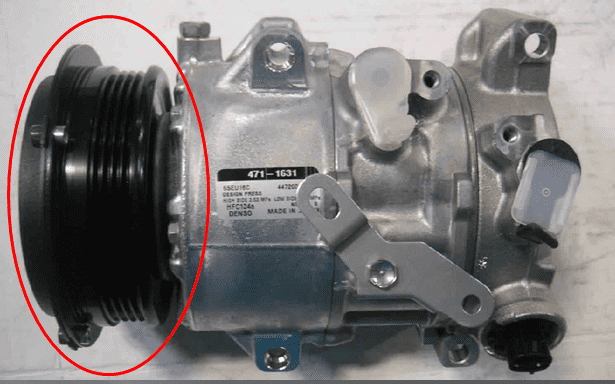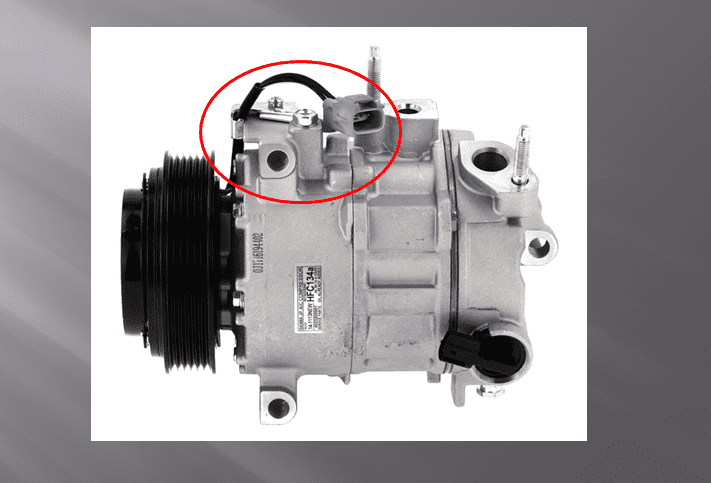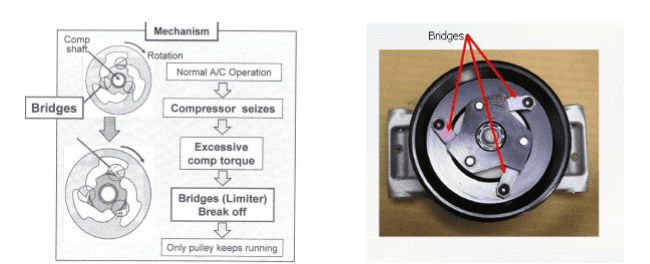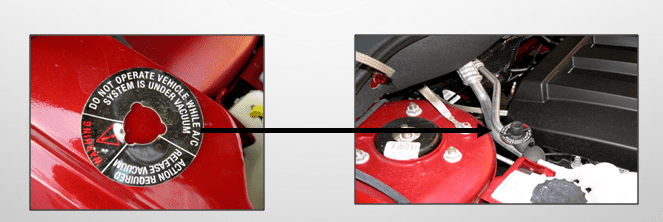Exploring electronically controlled variable displacement compressors
By Richard Hawkins, MACS contributor
Last week’s article focused on a case study with a “what if” question that involved installing a restricted expansion valve on a system that used an electronically controlled variable displacement compressor. As a result, this seems like a good time to focus further on these units.
Electronically controlled variable displacement compressors (ECVDs) have been in use now for over 15 years. However, there are a lot of technicians in the field who have very little knowledge about them and their operation.
One of the first steps in conducting A/C system diagnostics is identifying what type of compressor you are dealing with. This is easy with an ECVD because they have a control valve which is usually located in the rear section of the compressor with wires connected to it. Please see picture #1.

Picture #1: Notice the control valve with the electric connector on it.
ECVDs can be clutch less or might have a conventional clutch. Earlier models tended to be clutch less, whereas in recent years, there has been a move toward using clutches. Please see pictures #2 and #3.

Picture #2. What looks like a clutch is just a pulley that is attached to the compressor shaft. The compressor shaft is rotating whenever the engine is running, whether the A/C is turned on or off.

Picture #3: This unit looks very similar to the one in picture #2. However, it is obvious it uses a clutch because of the presence of the wire going to the clutch coil.
Clutch less units require a safeguard to prevent the compressor/ accessory belt from burning up if a compressor lock-up occurs. Otherwise, the vehicle could not be driven with the compressor locked up. To address this, they use a break-away hub which will separate and allow the pulley to turn if the compressor locks up. Please see picture #4.

Picture #4: Here are a couple of different designs of break-away hubs. Both use “bridges” which break if a compressor lock-up occurs. The one on the left has the bridges located inside of the hub. The one on the right has external bridges.
it is extremely important that the engine not be run on a vehicle with a clutch less compressor if there is no refrigerant in the A/C system. This is because the compressor depends on refrigerant to carry lubricant inside of it. Please see picture #5.

Picture #5: A label from a Jeep Compass with a clutch less compressor.
The label in the picture above says: “Do not operate the vehicle while the system is under vacuum.” It is surprising they didn’t just write the label to say, “Do not operate the vehicle without refrigerant in it as the problem with operating it under vacuum is not having refrigerant in the system to carry lubricant.”
Check back in next week and we will continue our exploration of ECVDs.
MACS is your source for trusted mobile A/C technical information! Join MACS as a member using this QR code!
Or click here.

Leave a Reply